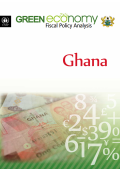As various countries explore the merits of green growth in their policies and programs, the Republic of Korea’s (ROK) transition toward green growth serves as an exemplary model.
This report examines why and how the ROK has pursued green growth as a national priority and as a development paradigm, sharing major milestones achieved in various areas such as greenhouse gas emissions, green technology, resource efficiency, and energy security. Drawing on the expertise of sector specialists and practitioners, the report highlights the processes, outcomes, and key takeaways in advancing green growth planning and implementation in the Korean context to address fossil fuel dependency, economic slowdown, and climate change. It highlights how a confluence of milestones created a strong enabling environment for green growth in the ROK, laying out the institutional, legal, and programmatic platform for green growth.
Big cities drive economic growth, 60% of global GDP is generated in only 600 urban centers. At the same time, urban areas consume more than two-thirds of the world’s primary energy and produce nearly four-fifths of all global greenhouse gas emissions (GHG emissions). In this context, mayors have to make strong arguments on economic as well as environmental aspects of green projects to foster viable greening of their cities.
This report is an attempt to provide a bridge between the published estimates of economic benefits and estimates obtained directly from cities, and the use of such estimates by decision-makers in specific settings. The report aims to provide best practice insights into the economic co-benefits of green city initiatives, how they are measured and the data and methodologies used.
Information has been gathered from selected cities and five key sectors where data is available, namely the buildings sector, public and private transportation, energy efficiency and community scale development.


A recent green economy assessment report (UNEP, 2014) on Kenya reveals that the transition to a green economy can deliver important benefits, such as long-term economic growth, a cleaner environment and high productivity. The report also indicates that green fiscal policies, which include a range of tools such as taxes, subsidies, user charges and fees, and public expenditure, can be useful in supporting this transition.
Following that study, this working paper provides an overview of the current status of green fiscal policy in Kenya, key challenges and opportunities for further green fiscal policy reforms. The paper reviews government revenues and expenditures and analyses the potential for green fiscal policy (GFP) in selected key sectors of the economy, including forestry, energy, mining and oil, water, fisheries, waste management and wildlife.
